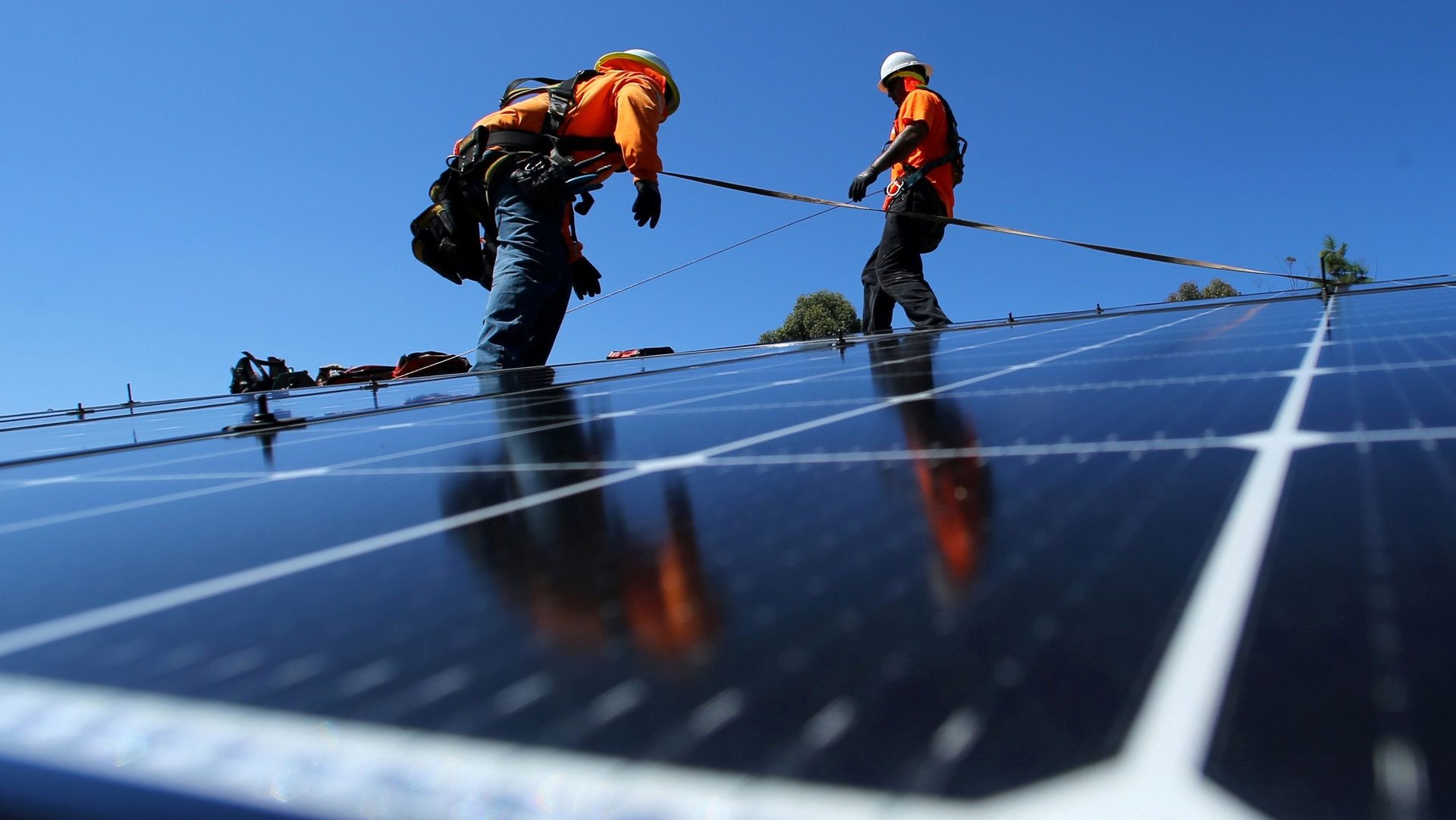All new homes in California may soon have solar panels
By 2020, most new California homes will likely be built with solar panels. On May 9, the California Energy Commission is expected to vote to pass a law mandating all new residential buildings up to three stories tall have solar panels by 2020, reports The Orange County Register. Today, only 15% to 20% of the state’s new homes have solar panels installed.


By 2020, most new California homes will likely be built with solar panels. On May 9, the California Energy Commission is expected to vote to pass a law mandating all new residential buildings up to three stories tall have solar panels by 2020, reports The Orange County Register. Today, only 15% to 20% of the state’s new homes have solar panels installed.
If passed, the solar-energy rule will slowly transform buildings in California into small distributed-power plants. Eventually, the main job of California’s energy grid will no longer be to deliver electricity from centralized fossil-fuel power plants. Instead, it will be to move electricity among many distributed solar and wind power generators.
The new solar mandate will likely eclipse California’s current energy-efficiency goal, approved in 2007, which states that by 2020, all new residential constructions will be “zero net energy,” meaning they generate as much electricity as they consume over a year. While not officially retired, the net-zero goals, regulators now say, are not enough to offset a given residential building’s use of fossil fuel-derived electricity—and resulting greenhouse-gas emissions—during the night.
Instead, the solar mandate can guarantee a steady supply of new solar power. Battery storage in homes and businesses (and electric cars) will eventually serve as a giant electricity bank for renewable sources. In this scenario, known as “partial grid defection,” homeowners would generate and store 80% to 90% of their electricity on-site and use the grid only as a backup. It may makes economic sense as soon as 2020, according to one 2017 McKenzie study. thanks to falling prices for solar panel and battery installations and maintenance.
Israel was there first
In the 1980, Israel did something similar. Beset by hostile neighbors and possessing few oil or coal reserves, the country made energy independence a national security priority. Instead of importing gas to heat its water, Israel settled on the sun. In 1980, the sun-drenched country became the first nation to require solar thermal systems—which pass water through tubes in machinery on a rooftop that absorbs heat from sunlight—in all new residential buildings (solar panels were still prohibitively expensive).
It was a success. Regulations soon begat cost savings. Prices fell as installations rose. The European Solar Thermal Industry Federation says Israeli systems now pay for themselves in less than four years. By 2011, nearly 90% of Israeli households’ were using solar water heaters (instead of gas- or electricity-powered appliances), and many buildings derived all their energy needs from the sun.
But Israel never gained a lead in photovoltaic solar panels because of opposition from entrenched electric utilities. For the last decade, Israel enacted strict quotas on the amount of rooftop solar panels eligible for government incentives (30 megawatts annually). Households that enrolled in the incentive programs could only sell power back to the state-owned utility as a discount on their electric bill “severely limit[ing] the amount of power a household could generate and sell,” reports the Israeli newspaper Haaretz. That finally changed late last year as the country struggled to meet its goals of generating 10% of its electricity from alternative sources by 2020, lagging well behind countries such as Germany and Spain with far less solar potential, despite having led the way in solar-generated heat.
A similar story has played out in parts of the US. Electric utilities have mounted fierce opposition to government-supported development of residential solar. In Florida, Hawaii, Maine, and Indiana, for example, utility lobbying has helped kill net-metering programs (paywall), which would have allowed homeowners to sell electricity captured on-site back to the grid. Though some cities, including San Francisco, already have solar mandates, this rule would make California the first state to require solar panels on new construction.
Critics of the California solar mandate warn that thousands of dollars in extra costs from solar panels will push home prices—already some of the most expensive in the country—still further out of reach. But the California Energy Commission says that the mandate, on average, would add about $40 a month to a mortgage payment over the 25-year lifetime of a typical mortgage, while also saving $80 a month in electricity costs in that time period.
Meanwhile, California is not only holding fast, it keeps raising the bar. The state’s current goal is to generate half the state’s electricity from renewable sources by 2030, and that now seems to be within relatively easy reach—renewables accounted for 27% of total generation last year). Last year, the California state senate proposed legislation to require 100% of the state’s power come from renewable sources by 2045.